Introduction
In the fast-paced realm of business, operational efficiency has become a critical driver of success. The emergence of robotic process automation (RPA) solutions, particularly through platforms like UiPath, offers a transformative approach to enhance productivity and streamline workflows. With an extensive suite of features designed to accommodate diverse organizational needs, UiPath bots empower teams to automate repetitive tasks, reduce human error, and free up valuable resources for strategic initiatives.
This article delves into the key features and types of UiPath bots, explores the numerous benefits of their implementation, and highlights successful case studies that showcase their impact. Additionally, practical best practices for integrating these automation solutions into business processes will be discussed, along with insights into the future of automation as it converges with artificial intelligence. Embracing these advancements can pave the way for a more efficient, innovative, and responsive work environment, ultimately driving organizations toward greater success.
Key Features of UiPath Bots
The platform offers an extensive suite of features designed to enhance operational efficiency and streamline business processes. Key features include:
-
User-Friendly Interface: The platform features an intuitive drag-and-drop functionality that enables users, regardless of their coding expertise, to easily create workflows. This accessibility facilitates quicker adoption across teams.
-
Scalability: UiPath’s robotic bots are designed to scale, enabling organizations to modify deployment based on changing business requirements without compromising performance. This flexibility ensures that operational demands can be met efficiently at any given time.
-
Integration Capabilities: The platform seamlessly integrates with existing enterprise systems, enabling automation across a variety of applications and processes. This capability enhances workflow continuity and reduces the friction often associated with implementing new tools.
-
Advanced Analytics: The platform offers robust analytics and reporting tools that allow organizations to monitor bot performance closely. This data-driven approach enables teams to identify areas for continuous improvement, supporting ongoing operational enhancements.
-
Robust Security: Security is paramount at this organization, with measures including data encryption and role-based access controls. The platform follows industry compliance standards, ensuring that sensitive data is safeguarded while promoting a secure operational environment.
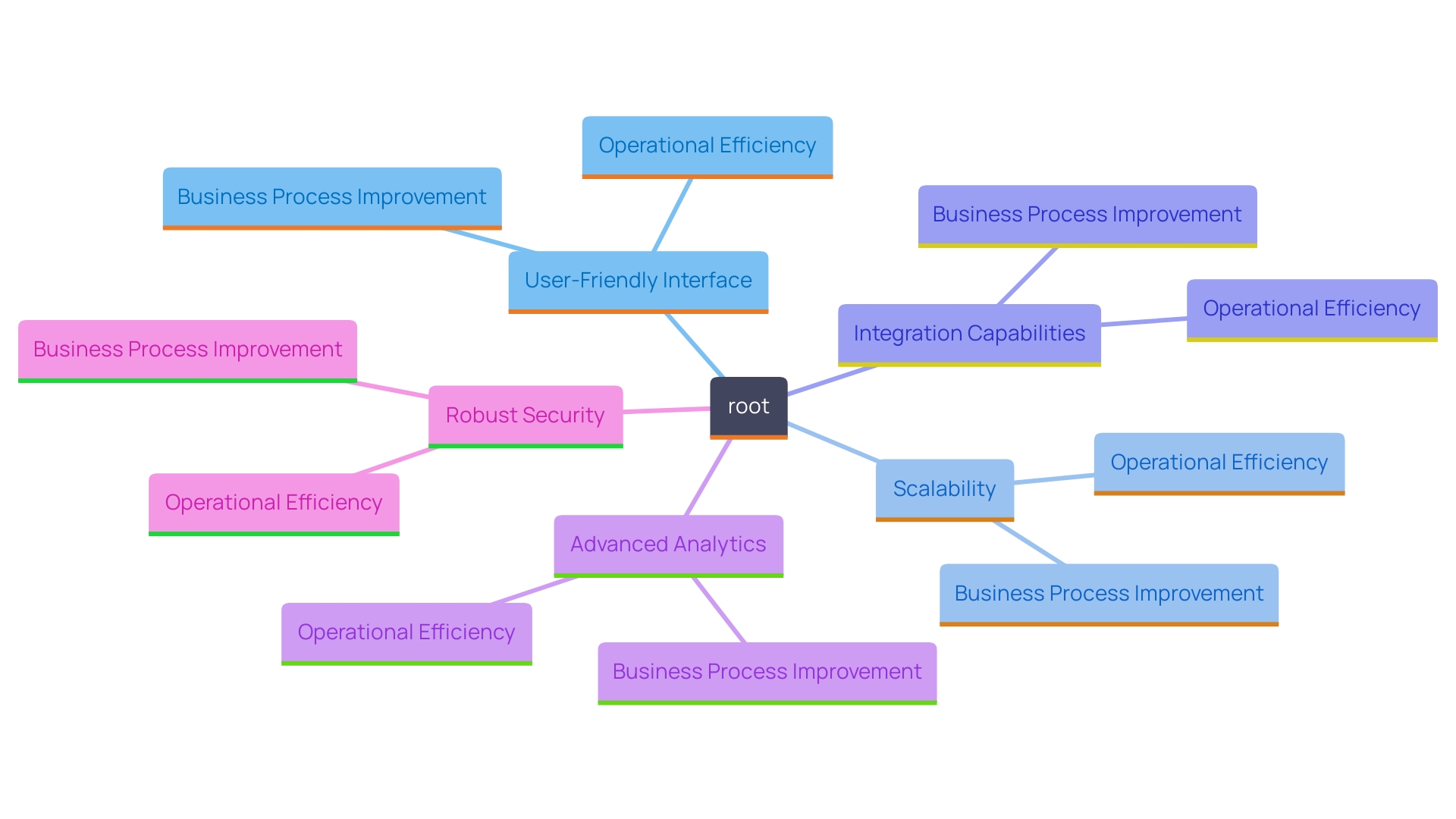
Types of UiPath Bots
UiPath offers a versatile suite of robotic process automation (RPA) solutions categorized into three primary types of bots, each tailored to meet distinct automation requirements within organizations:
-
Attended Automations: These systems collaborate with human staff, streamlining repetitive tasks in real-time. By handling mundane activities, they enhance productivity and free up staff to concentrate on more strategic, value-added tasks. ‘This direct collaboration not only enhances efficiency in operations but also improves job satisfaction by reducing the burden of monotonous work.’.
-
Unattended Automated Systems: Operating independently, unattended automated systems are engineered to autonomously manage back-office operations. They execute high-volume and frequent tasks without any human intervention, making them ideal for processes that demand consistent output and speed. By automating these processes, organizations can significantly lower costs and minimize mistakes, leading to improved overall efficiency.
-
Hybrid Bots: These innovative bots merge the functionalities of attended and unattended bots. They allow for user interactions while simultaneously executing tasks automatically. This flexibility allows organizations to streamline workflows and adjust to differing work demands without sacrificing the human touch when necessary.
In an era where automation is pivotal, implementing these bot types can transform operational landscapes. As noted by industry experts, “Organizations can’t just plug RPA in and let it go.” Continuous monitoring and management remain crucial to harnessing the full potential of RPA technologies. The proper integration of these automated systems can lead to a more efficient, productive, and responsive work environment.
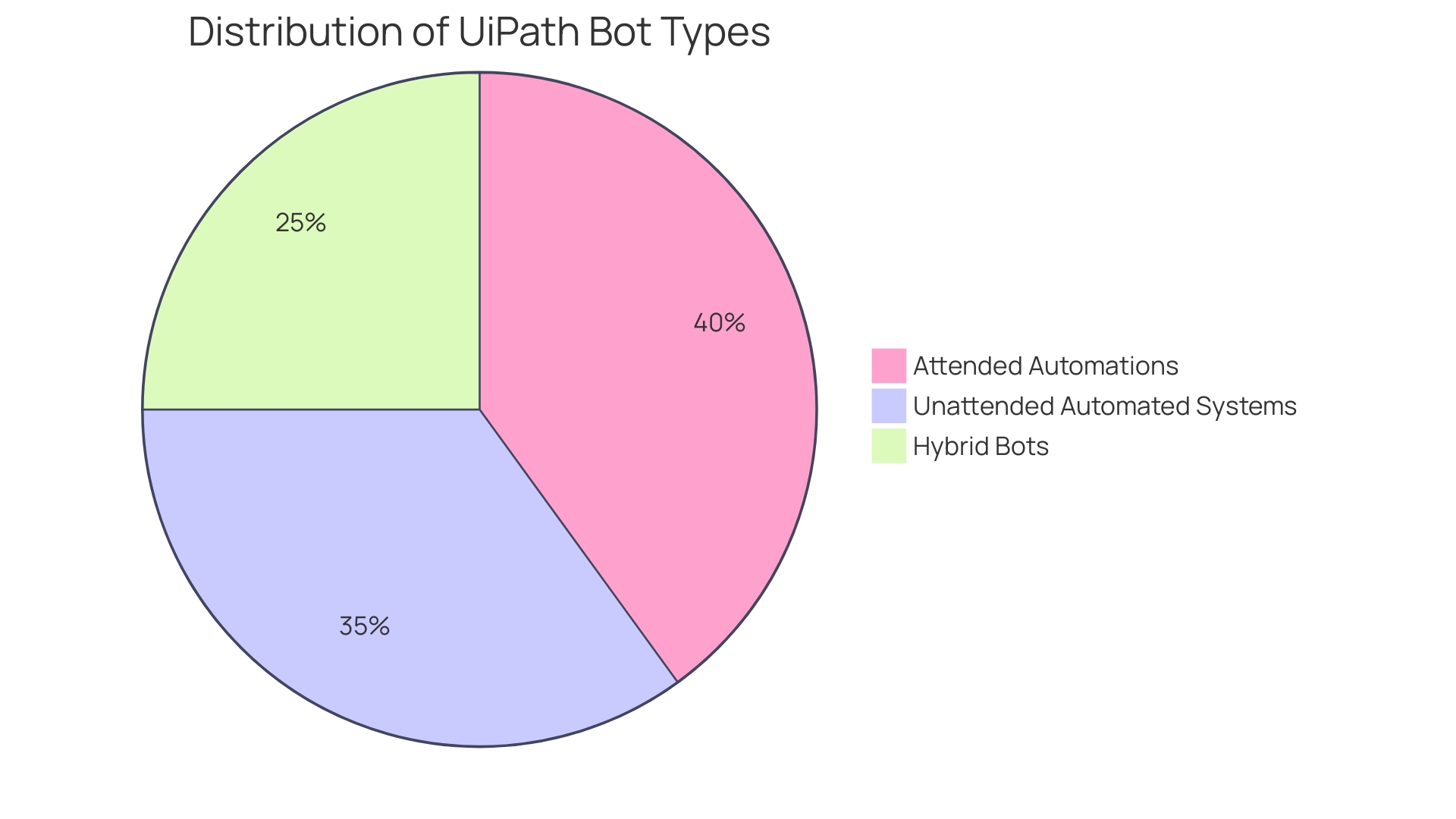
Benefits of Implementing UiPath Bots
Implementing UiPath bots can yield transformative benefits across multiple facets of an organization:
-
Increased Efficiency: Automation of routine and repetitive tasks can drastically reduce processing times and minimize errors. For instance, businesses that previously took hours to build forms now complete the task in under a minute, realizing significant time savings. This enhancement in efficiency not only streamlines operations but also allows teams to focus on higher-value activities, fostering a more productive work environment.
-
Cost Savings: By decreasing dependence on manual labor, mechanization can result in significant operational cost reductions. Organizations can redirect resources—whether financial or human—towards strategic initiatives that drive growth. A relevant example is OnCall Health, where streamlining form creation saved hundreds of hours and effectively corresponded to the salary of a whole employee, emphasizing the financial effect of such improvements.
-
Improved Employee Satisfaction: Employees freed from monotonous tasks tend to report higher levels of job satisfaction. This shift enables them to engage in more meaningful work, which not only enhances morale but also increases retention rates. Reports indicate that professionals dedicated to automation projects experience enhanced job satisfaction and are more engaged in their roles, which is crucial in maintaining a motivated workforce.
-
Enhanced Compliance: Automation tools guarantee that processes are carried out uniformly, following regulatory standards and minimizing the chance of non-adherence. By following predefined rules and instructions, these bots facilitate a structured approach to compliance, allowing organizations to navigate complex regulatory landscapes with greater confidence. The growing emphasis on compliance in data-heavy industries underscores the necessity of such automated solutions.
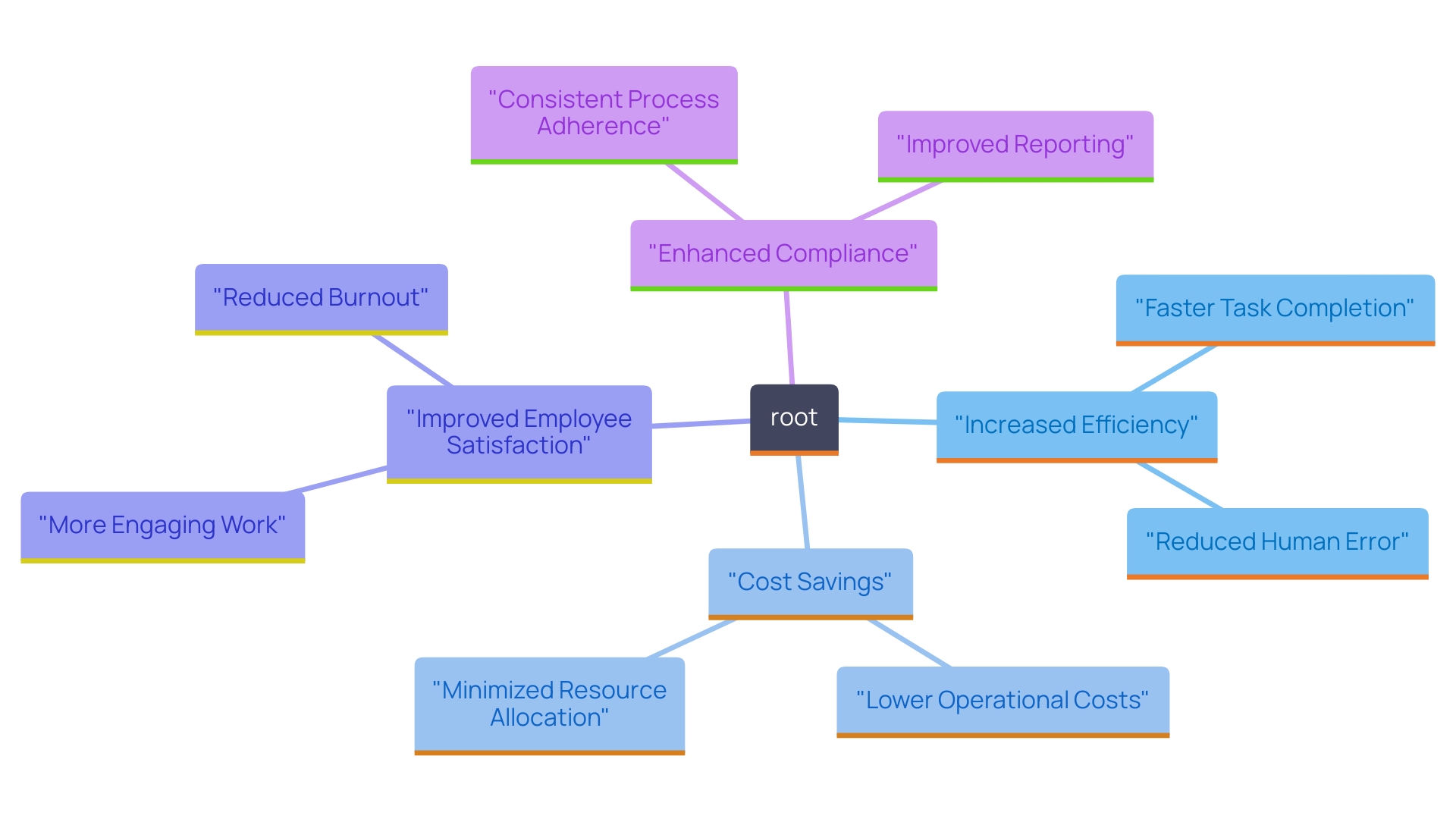
Case Studies: Successful Automation with UiPath
Organizations are increasingly turning to UiPath for automation solutions, and the results speak volumes:
1. Deloitte: By utilizing automation technology to streamline its financial processes, Deloitte achieved a remarkable 70% reduction in processing time, all while enhancing accuracy. This transformation not only streamlined their operations but also allowed employees to focus on more strategic tasks.
2. Siemens: This industrial giant employed automation technology to optimize its procurement processes, resulting in a 50% decrease in manual effort. The effect on efficiency was significant, enabling Siemens to allocate resources more effectively and enhance overall productivity.
3. Cognizant: By utilizing automation, Cognizant transformed its client onboarding processes, slashing onboarding time by 80%. This impressive acceleration not only enhanced operational efficiency but also greatly improved client satisfaction, allowing Cognizant to deliver services faster and more effectively.
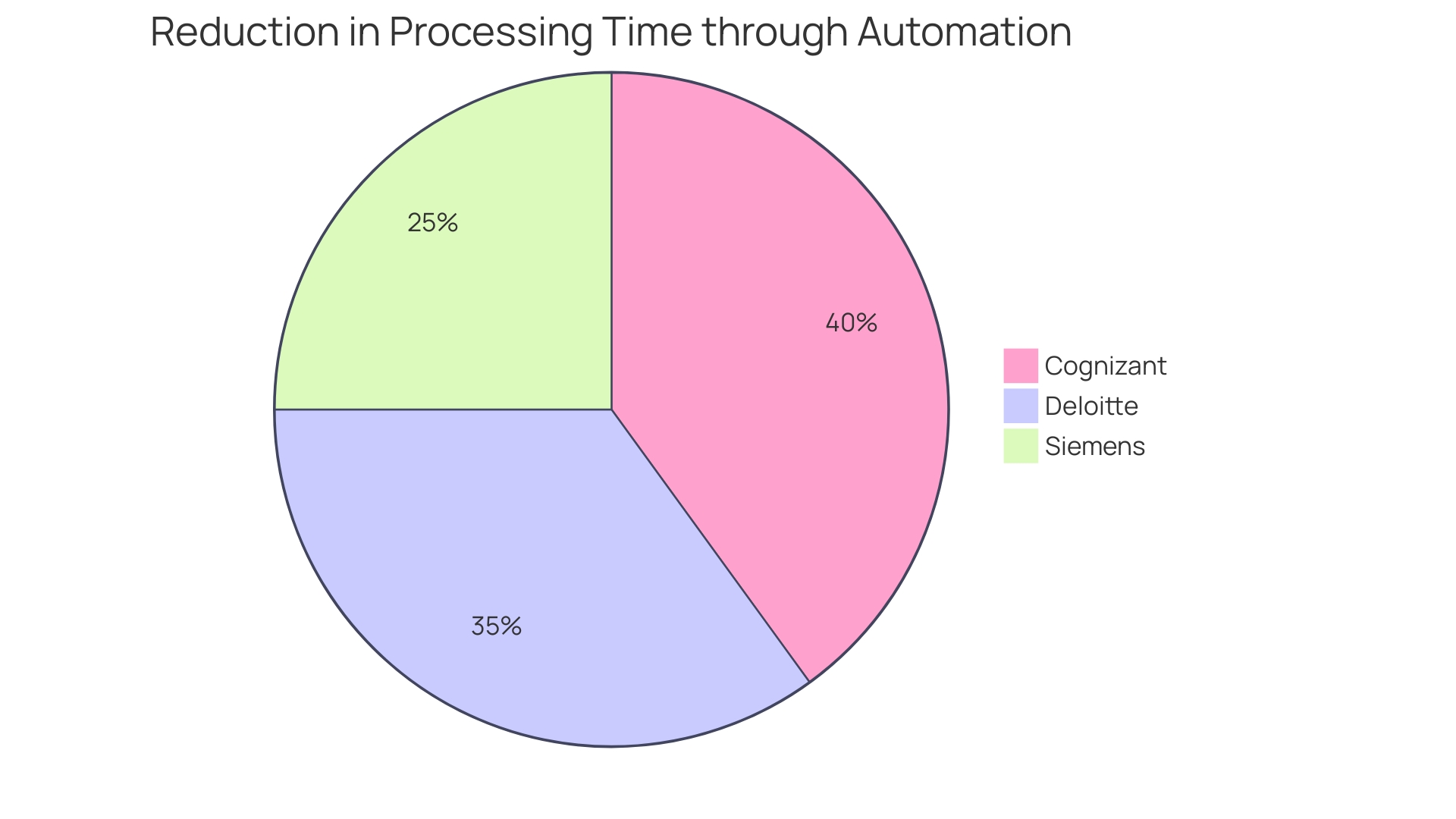
Best Practices for Implementing UiPath Bots in Business Processes
To harness the full potential of UiPath bots, it’s essential to adopt a series of strategic best practices:
-
Identify High-Impact Processes: Prioritize automating processes that are repetitive and time-consuming. This approach not only enhances efficiency but also delivers immediate value to the organization.
-
Engage Stakeholders: Involving pertinent stakeholders during the process of mechanization is essential. Their insights can guide decisions and ensure alignment across departments, fostering a collaborative atmosphere that can facilitate the shift to mechanization.
-
Monitor and Optimize: Continuous monitoring of bot performance is vital. Gathering opinions and examining information enables organizations to improve procedures and boost efficiency over time.
-
Train and Upskill Employees: Providing comprehensive training on how to collaborate effectively with bots empowers employees. This investment in skill development ensures that the workforce is well-equipped to utilize technology, thereby maximizing productivity.
Applying these practices can greatly enhance process efficiency, making this platform a powerful partner in the journey toward digital transformation.
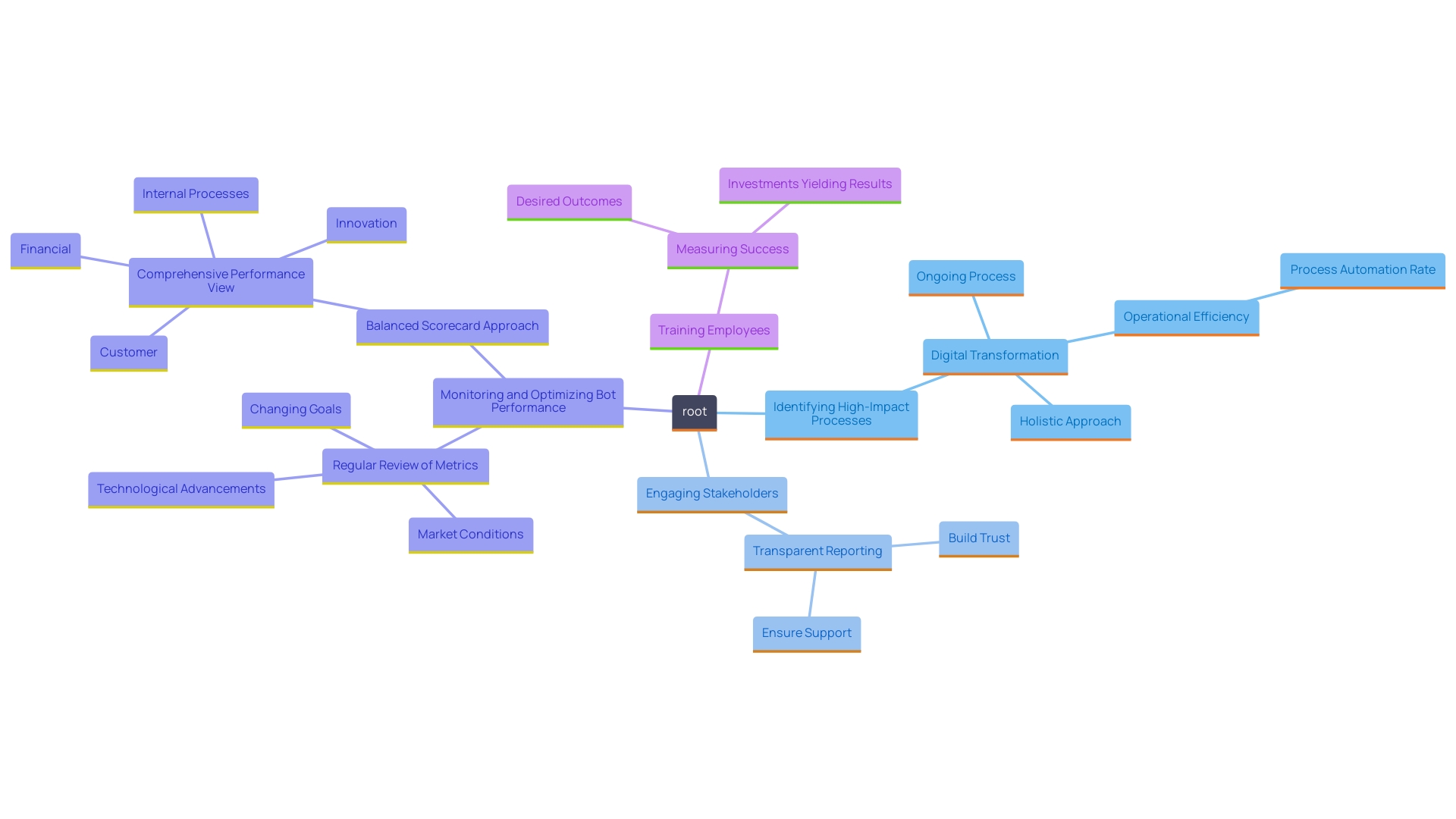
Future of Business Automation with UiPath and AI
The terrain of business mechanization is rapidly evolving, particularly with the seamless integration of AI technologies into platforms like UiPath. This convergence empowers organizations to leverage AI-driven insights, enabling bots to undertake increasingly complex tasks, uncover data patterns, and make real-time, informed decisions that enhance operational efficiency.
As businesses navigate the challenges of existing systems, which may be intricate and longstanding, the potential of integrating AI without a complete overhaul becomes a crucial asset. A simulated case study illustrates how a company successfully incorporated AI into its workflows, demonstrating that significant system changes are not always necessary for innovation.
The results of this integration are compelling. Businesses have shared life-changing experiences where mechanization serves as the limbs, while AI operates as the brain, offering significant context for important decisions. This synergy not only streamlines processes but also fosters innovative business models that elevate customer experiences.
Moreover, UiPath’s recognition as a leader in the IDC MarketScape for Intelligent Document Processing highlights its pivotal role in the automation sphere, solidifying its status as a trusted partner in this technological evolution. As organizations increasingly embrace these advancements, the ability to integrate AI effectively without disrupting established workflows will be a game-changer, setting the stage for future growth and efficiency.
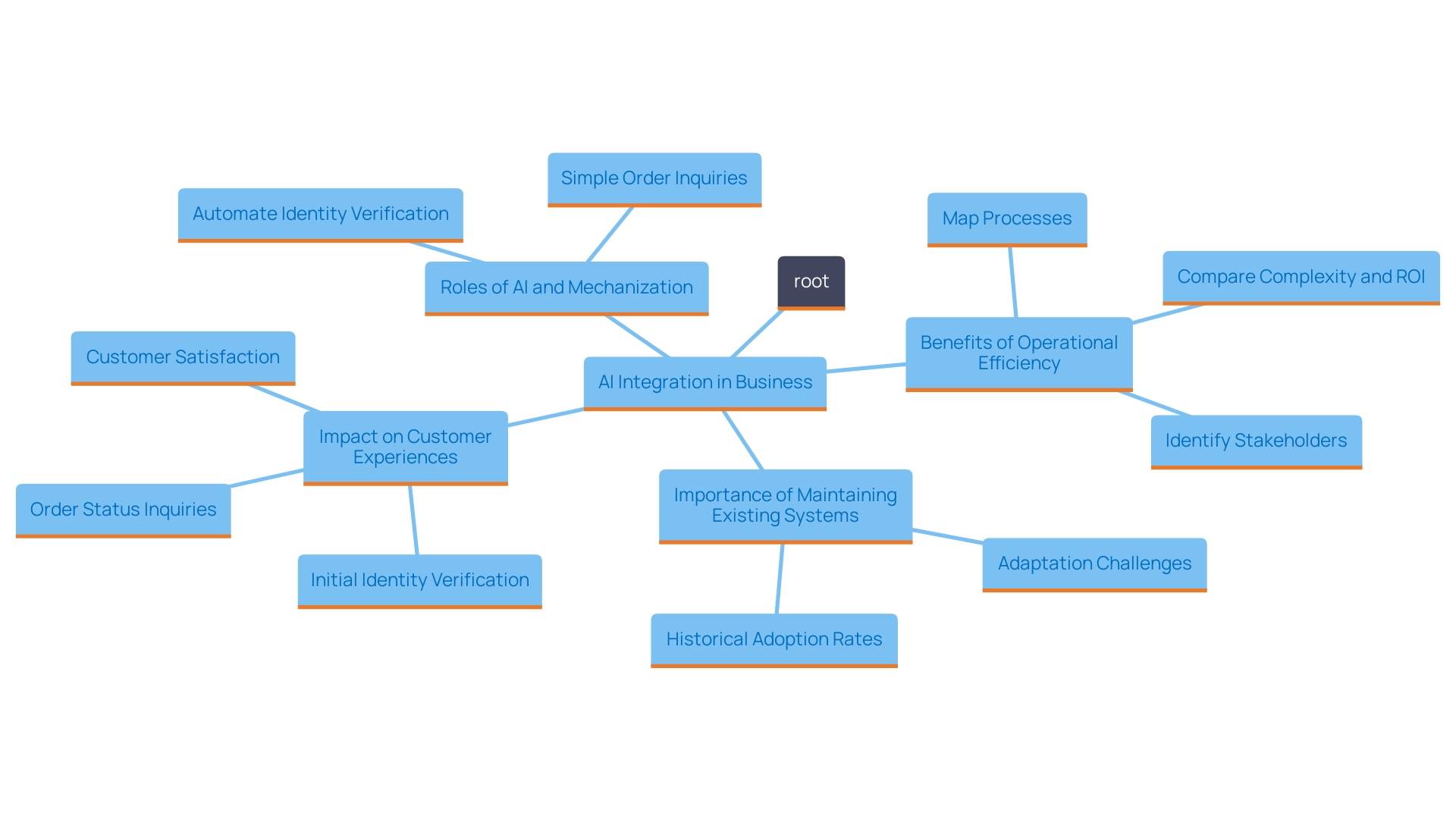
Conclusion
Operational efficiency is increasingly vital in today’s business landscape, and the implementation of UiPath bots presents a powerful solution to enhance productivity and streamline processes. Key features such as a user-friendly interface, scalability, and robust security enable organizations to adopt automation with confidence. The diverse types of bots—attended, unattended, and hybrid—cater to various needs, ensuring that businesses can optimize their operations effectively.
The benefits of integrating UiPath bots are substantial. Increased efficiency and significant cost savings allow teams to focus on strategic initiatives, while improved employee satisfaction and enhanced compliance reinforce the overall value of automation. Successful case studies from industry leaders like Deloitte, Siemens, and Cognizant illustrate the tangible impact of these solutions, showcasing remarkable improvements in processing times and operational effectiveness.
To maximize the potential of UiPath bots, best practices such as identifying high-impact processes, involving stakeholders, and continuously monitoring performance should be prioritized. As the integration of AI into automation solutions continues to evolve, organizations are well-positioned to leverage these advancements without overhauling existing systems. This synergy between automation and AI not only streamlines workflows but also fosters innovative business models.
Embracing UiPath bots and their capabilities paves the way for a more efficient, responsive, and innovative work environment. As organizations navigate the complexities of modern business, the strategic implementation of automation solutions will be a crucial driver of success, ultimately leading to sustainable growth and enhanced competitiveness.

